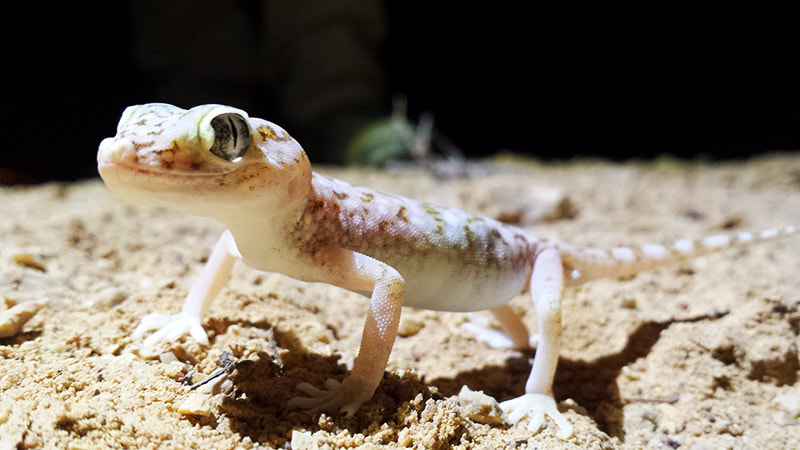| Lizards as a group are thought to be ancestrally diurnal. Most of them remain so to this day. Furthermore, they are ectotherms and are predominantly small bodied tetrapods and could thus be particularly affected by the climatic differences between day and night. For this work we collected distribution range and activity time data for all 1,113 lizard species found throughout mainland Eurasia. We then looked at links between richness patterns of lizards with either temperature or productivity. |
| Ambient temperature has a strong influence on richness patterns of both diurnal and nocturnal lizards, where species numbers increase with an increase in temperature. Productivity was found to be more tightly related to the proportion of nocturnal species – again in a positive relationship. We think that our results point towards the fact that low temperatures are a limiting factor for lizard activity period. It is possible that the year-round warm nights of tropic regions enabled lizards to move towards nocturnal activity. In hot deserts, perhaps the combination of hot days and aridity make diurnal activity less attractive, whereas nocturnal activity can provide shelter from these extreme conditions |




 RSS Feed
RSS Feed
